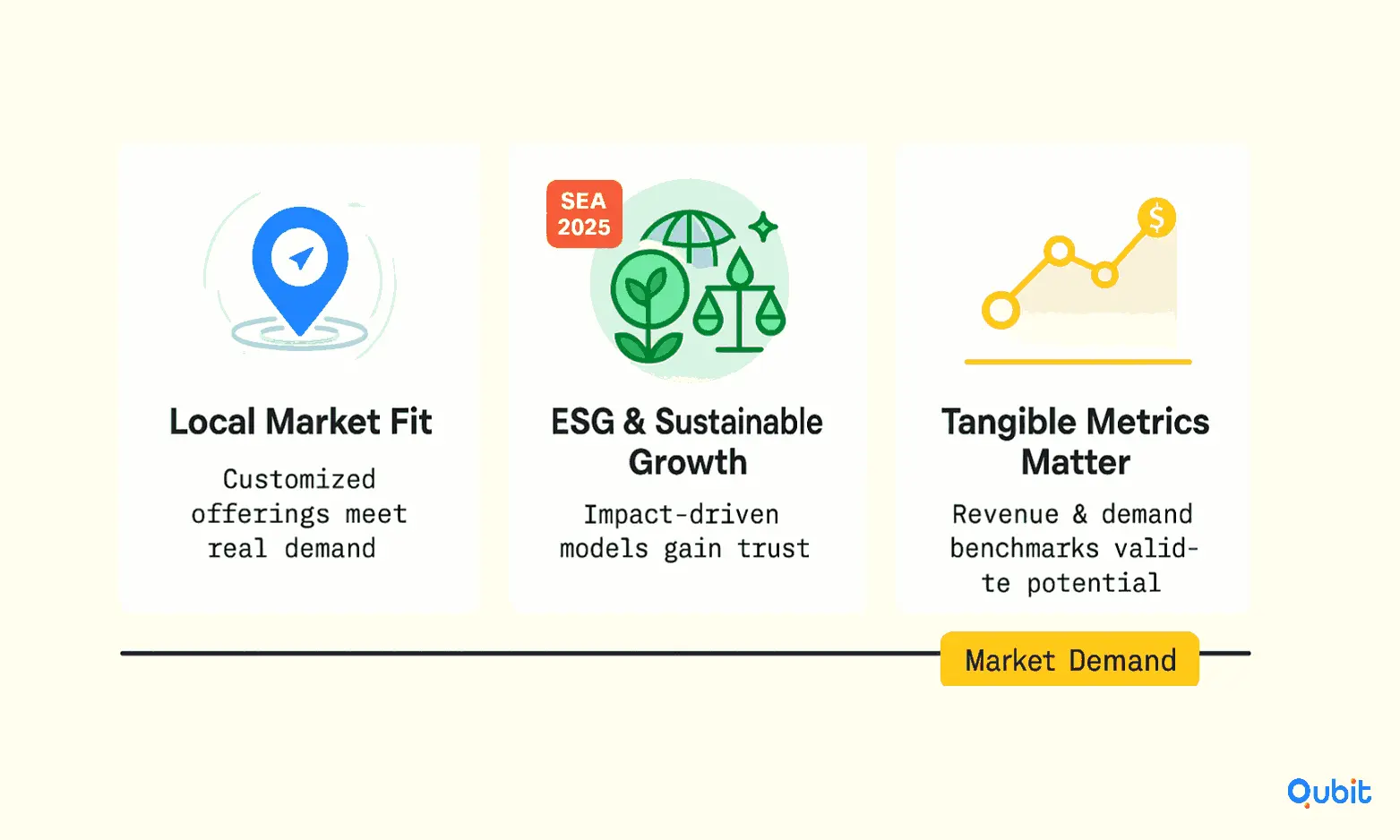Investors often face the challenge of identifying promising startups amidst a sea of pitches. A robust pre-pitch evaluation framework can streamline this process, ensuring that critical factors like market potential, founder credibility, and scalability are assessed effectively. These frameworks are not just tools; they are essential for making informed decisions that align with long-term investment goals.
A nuanced perspective emerges when considering evaluating startup founders in first meetings, offering you concrete examples of direct, in-person assessments that align with analytical frameworks. This blog aims to equip investors with actionable checklists, essential documentation insights, and practical examples to refine their startup evaluation process.
Let’s dive into the strategies and tools that can transform how investors approach pre-pitch evaluations.
Effective Investor Readiness Checklists and Best Practices
A structured investor readiness checklist is more than a tool, it’s a roadmap for startups to demonstrate their financial and strategic preparedness. By addressing key investor concerns, such as scalability and risk management, startups can position themselves as credible and investment-worthy. A well-constructed checklist not only ensures that critical evaluation criteria are met but also highlights a startup’s ability to adapt to evolving market demands.
1. Core Elements of an Investor Readiness Checklist
An effective checklist should cover the foundational aspects that investors prioritize. These include:
Financial Metrics: Ensure accurate financial statements, cash flow projections, and a clear understanding of key performance indicators (KPIs).
Scalable Business Models: Demonstrate how your business can grow without proportionally increasing costs.
Market Validation: Provide evidence of product-market fit, such as customer feedback or pilot results.
Risk Assessment: Incorporate scenario analysis to address potential challenges and outline mitigation strategies.
2. Adapting to 2024 Trends
Investor expectations are constantly evolving. Research from 2024 highlights the growing importance of integrating scenario analysis and risk assessment into readiness checklists. This shift reflects a broader emphasis on resilience and adaptability in uncertain markets. Startups should also align their checklist items with the latest regulatory and technological advancements to foster investor confidence. For instance, compliance with data privacy laws or the integration of AI-driven solutions can significantly enhance a startup’s appeal.
3. Best Practices for Maintaining Your Checklist
Creating a checklist is only the first step; maintaining it is equally critical. Here’s how to ensure your checklist remains effective:
Regular Updates: Revisit and revise your checklist quarterly to reflect changes in your business or industry.
Stakeholder Collaboration: Involve key team members to ensure all aspects of the business are accurately represented.
Investor Feedback: Use insights from past investor interactions to refine your checklist and address recurring concerns.
By implementing these practices, startups can not only meet but exceed investor expectations, paving the way for successful funding rounds.
Key Documents and Metrics for Investment
Investors often prioritize clarity and precision when evaluating a startup's potential. The foundation of their decision-making lies in the quality of the documents and metrics presented, which serve as a window into the startup’s viability and growth trajectory.
Essential Documents for Investor Confidence
A well-crafted business plan is indispensable. It outlines the startup’s mission, target market, competitive landscape, and operational strategy. This document not only demonstrates the founder's vision but also provides a roadmap for scalability.
Financial projections are equally critical. These projections should include detailed income statements, balance sheets, and cash flow analyses. Investors rely on these figures to assess profitability timelines, funding requirements, and overall financial health. Transparency in these documents fosters trust and simplifies due diligence processes.
Metrics That Matter
Quantitative data plays a pivotal role in validating a startup’s potential. Key performance indicators (KPIs) such as customer acquisition cost (CAC), lifetime value (LTV), and monthly recurring revenue (MRR) provide a snapshot of operational efficiency and market demand.
Growth metrics, including year-over-year revenue increases and user base expansion, further illustrate scalability. These metrics, when segmented by market or product line, offer deeper insights into the startup’s strengths and areas for improvement.
Streamlining the Evaluation Process
Presenting well-organized and segmented documents can significantly streamline the due diligence process. Investors appreciate clarity, as it allows them to focus on the startup’s potential rather than untangling poorly structured information.
By combining robust documentation with actionable metrics, startups can effectively communicate their value proposition and secure investor confidence.
Investor Meetings and Pitch Q&A
Investor meetings are pivotal moments for startups, where clear communication and strategic preparation can make all the difference. To build trust and credibility, founders must focus on presenting both opportunities and risks with honesty while backing their claims with solid data.
1. Prepare with Transparency
Investors value transparency. Before stepping into a meeting, ensure your pitch highlights not only the potential of your business but also the challenges it may face. This balanced approach demonstrates a realistic understanding of your market and builds confidence in your ability to navigate complexities.
2. Anticipate Common Questions
Investor Q&A sessions often revolve around recurring themes such as market size, revenue projections, and competitive advantages. Preparing evidence-backed responses to these questions is essential. For instance, if asked about scalability, provide specific data points or case studies that illustrate your growth potential. This approach not only answers the question but also reinforces your credibility.
3. Present Data-Driven Insights
Numbers speak louder than words in investor meetings. Whether discussing financial forecasts or customer acquisition strategies, ensure your claims are supported by reliable data.
4. Stay Composed During Challenging Questions
Difficult questions are inevitable, but how you handle them can leave a lasting impression. Instead of deflecting, acknowledge the concern and provide a thoughtful, data-supported response. This demonstrates your ability to think critically under pressure and reinforces investor trust.
By combining thorough preparation with transparent communication, you can turn investor meetings into opportunities to build lasting partnerships. These strategies specifically help you to convince investors to secure funding..
Investor Preferences and Market Insights
Investor priorities are shifting, reflecting a growing emphasis on localized strategies and sustainable business models. Companies that demonstrate a robust understanding of their local markets and present clear paths to profitability are increasingly favored by investors. This focus on measurable outcomes ensures that investments align with tangible growth opportunities and long-term viability.

Local Market Strategies and Profitability
A strong integration of local market strategies has become a cornerstone of investor decision-making. Businesses that tailor their operations to meet regional demands often gain a competitive edge. For example, the Market Demand Figure highlights the validation of market opportunities, with 10,000 companies generating $200 million annually at $20,000 per year. Such figures underscore the importance of aligning products or services with specific market needs. Investors are drawn to these tangible metrics, as they provide a clear indication of market demand and profitability potential.
ESG Factors in Investment Decisions
Environmental, social, and governance (ESG) considerations are no longer optional, they are integral to the investment process. By 2025, Southeast Asia investors are expected to prioritize sustainable growth, healthy unit economics, and measurable ESG practices, as noted in the SEA Investor Focus 2025 insight. Companies that embed ESG principles into their operations not only appeal to ethical investors but also position themselves favorably in competitive markets. This trend reflects a broader shift toward responsible investing, where profitability and sustainability go hand in hand.
The Role of Tangible Metrics
Investors increasingly rely on concrete data to validate market opportunities and assess business potential. Figures like the Market Demand Figure serve as critical benchmarks, offering clarity on market size and revenue possibilities. These metrics help investors identify businesses with scalable models and realistic growth trajectories.
Understanding these evolving preferences is essential for businesses seeking investment. By integrating local strategies, prioritizing ESG factors, and presenting measurable profitability metrics, companies can align themselves with investor expectations and secure funding for sustainable growth.
Real-World Examples and Resources
Structured evaluation frameworks often shine brightest when applied to real-world scenarios. By examining practical examples, startups can better understand how early validation and strategic planning pave the way for successful funding rounds.
Logistics SaaS Case Study: From Pilot Programs to Series A
One standout example is a B2B SaaS tool designed for logistics companies. This startup began by running pilot programs with local logistics firms, allowing them to test their product in real-world conditions. These pilots not only validated the software’s functionality but also converted into paying customers. This early traction enabled the company to transition smoothly from Pre-seed to Series A funding, showcasing how robust strategies and initial validation can accelerate growth.
This case study underscores the importance of readiness frameworks in scaling operations. By focusing on customer acquisition early on, the startup demonstrated its market viability to investors, securing funding that fueled further expansion.
Why Case Studies Matter
Case studies like the Logistics SaaS example illustrate the tangible impact of structured approaches. They highlight how startups can transition across funding stages by aligning their strategies with investor expectations. These real-world examples serve as a blueprint for founders aiming to refine their pitch readiness and secure capital effectively.
Structured frameworks don’t just prepare startups for funding; they also instill confidence in investors. When founders can showcase validated business models and clear growth trajectories, they position themselves as reliable candidates for investment.
Conclusion
Preparing for investor pitches requires a thoughtful and structured approach. From creating detailed checklists to tracking essential financial and document metrics, every step plays a critical role in ensuring a smooth process. Equally important is the preparation for pitch meetings, where clarity and confidence can make a lasting impression. Understanding market insights further strengthens your position, allowing you to align your pitch with current trends and investor expectations.
A narrative-driven evaluation process not only enhances your pitch but also helps investors make informed decisions. This clarity fosters trust and positions your startup as a compelling opportunity.
If you're looking to seamlessly connect with startups that meet your investment criteria, we at Qubit Capital can assist with our comprehensive Startup Matchmaking service. Let us help you find the right opportunities tailored to your goals.
Key Takeaways
- Utilize structured checklists to evaluate startup readiness effectively.
- Examine key documents such as financial projections and business plans thoroughly.
- Prepare for investor meetings with clear, data-driven Q&A strategies.
- Leverage market insights and ESG factors to assess investment potential.
- Real-world case studies validate the impact of robust pre-pitch evaluation frameworks.
Frequently asked Questions
What should investors look for in a startup?
Investors should focus on evaluating a startup’s business model, financial health, team capabilities, and market potential, while also considering associated risks and scalability.






